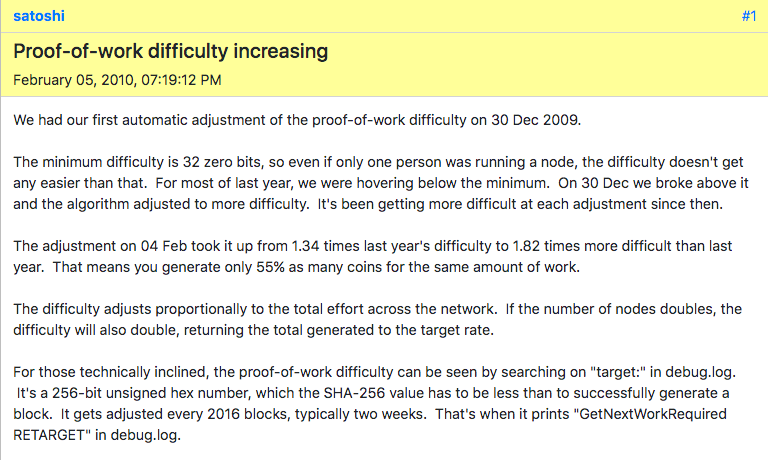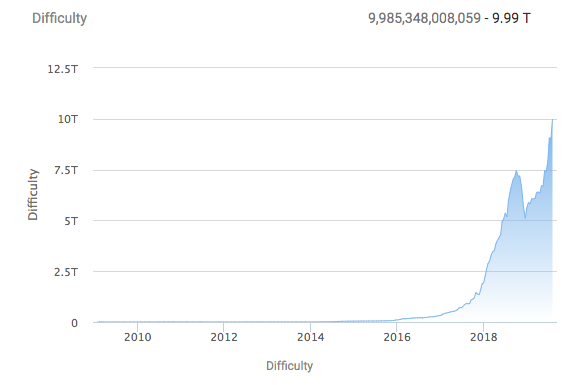

Bitcoins Proof of Work difficulty adjustment is a feature, not a bug.
Yesterday morning, while listening to the latest episode of Pardon My Take, I was presented with a very teachable moment as my former co-workers explained how they don't understand Bitcoin. PFT Commenter specifically brought up a great question about an increase in the amount of computing power dedicated to mining Bitcoin. "Wouldn't that make it easier to mine bitcoins and inflate the supply?" (paraphrased)
The answer to this question is two-fold and involves one of my favorite fundamental innovations that Bitcoin brought to the world, the difficulty adjustment. The first part of the answer to this question is, more hashrate (computing power) coming onto the network will allow you to mine bitcoins faster, but it will never allow you to mine new bitcoin after 21 million bitcoins have been distributed to miners as directed by the rules of the protocol. In a hypothetical world where there is no difficulty adjustment, all 21 million bitcoin may have been mined at this point in its history due to increased hash rate speeding up block times.


This is why the difficulty adjustment is so vital to Bitcoin as an incentive system with built-in checks and balances. Without it, Bitcoin's distribution schedule would be unpredictable. By making it so the protocol self-adjust every 2016 blocks (roughly two weeks), Satoshi ensured that blocks would come in at an interval of one block roughly every ten minutes. And, a decade in, we've seen how this novel innovation has played out in the wild. Flawlessly.
As you can see from the screenshot above, Bitcoin's first difficulty adjustment did not occur until almost a full year into its existence. Between January 3rd, 2009 and December 30th, 2009 there was so little hashpower outside of Satoshi's hardware dedicated to securing the ledger that there were no upward difficulty adjustments. The difficulty remained at its hardcoded lower bound, which some speculate was based on what Satoshi believed his own hardware could handle at the time. Over time, as Bitcoin became more desired and more people started mining, the hardware needed to be a competitive miner transitioned from CPUs (your laptop or home computer), to GPUs (more powerful, specialized computers commonly used for gaming), to FPGAs (even more specialized chips), to ASICs (chips built specifically to mine Bitcoin) which rule the landscape today.
All the while, as more and more computing power has been targeted at Bitcoin, the difficulty adjustment has been there, helping to oscillate the difficulty target so that Bitcoin's supply schedule remains very predictable. When computing power has left the network at times when energy costs exceeded expected profit, the difficulty adjustment has been steadfast. Bringing the difficulty target to a level that makes mining profitable again for miners. Helping to prevent the much talked about "mining death spiral". An extremely beautiful and elegant solution to a very complicated computer science problem for distributed consensus networks.
So shoutout to the difficulty adjustment, a true legend of the game and something that Bitcoin could not survive without.
Final thought...
Need to up my organization game. Need a big end of Summer, beginning of Fall organization level-up from ya boi.